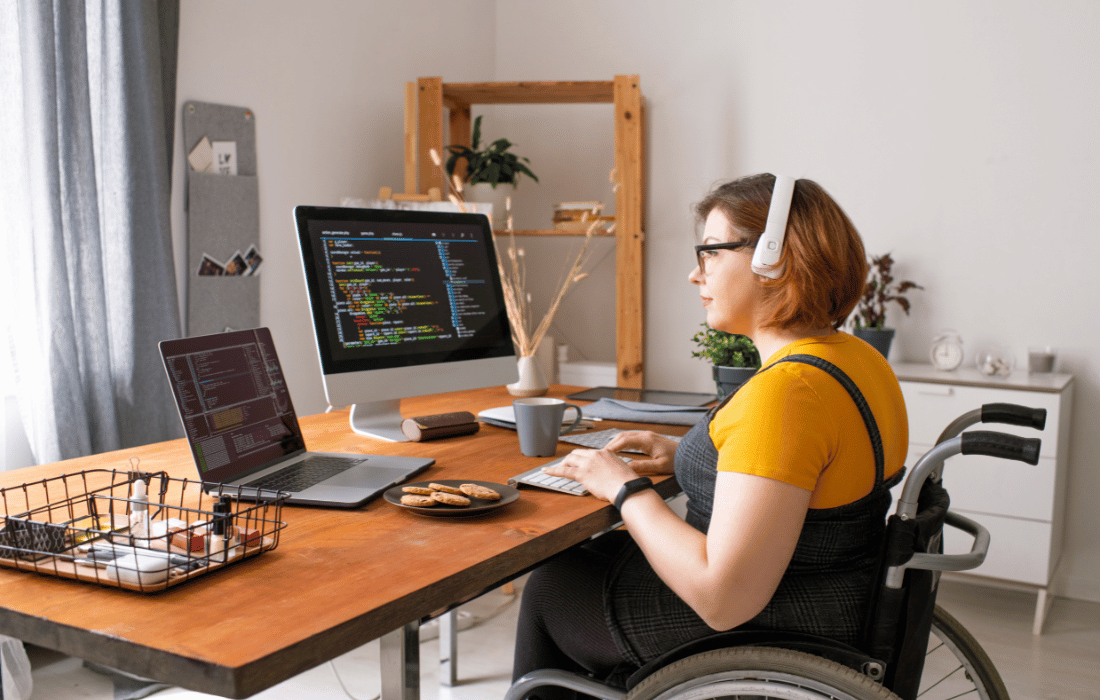We’re all guilty of it. Sitting for hours at a desk, in front of the computer, hustling away on some project or meeting deadline, thinking that our hour at the gym later will balance it all out. But what if I told you that’s simply not enough? Yep, that spin class or weightlifting session at the end of your eight-hour workday doesn’t undo the harm you’ve done by sitting on your butt all day. Welcome to the hard truth: a sedentary lifestyle, even when paired with exercise, is still killing us slowly.
The Silent Killer: Sedentary Lifestyles
The idea that you can sit for hours and then get up for an hour of intense exercise to wipe the slate clean is a fallacy. Being sedentary for prolonged periods is wreaking havoc on your body, and most of us don’t even realize it. According to research, being sedentary for too long contributes to a host of health issues, including increased blood triglycerides, insulin resistance, and an overall elevated risk for cardiovascular disease.
The Cardiovascular Time Bomb: Blood Triglycerides
Let’s break this down. When you’re inactive for long stretches, your muscles aren’t contracting, which means they’re not using the fats and sugars in your blood for energy. That leads to higher levels of blood triglycerides—fats that circulate in your bloodstream. High triglycerides are an independent risk factor for cardiovascular disease. Yes, even if you manage to keep your weight in check and eat healthy foods, long periods of sitting contribute to this problem. And worse, research shows that these high levels persist even after you’ve hit the gym.
Think of it like this: you’ve been sitting for six hours, which is like letting a car idle in one spot with the engine running all day. Even if you drive it around the block at full speed once, that’s not enough to clear out the gunk that’s built up from all that idle time.
A Far Cry from Our Ancestors
Now, let’s take a step back. Humans weren’t designed to sit for hours on end. We are literally the product of tens of thousands of years of constant movement. Our ancestors roamed, hunted, gathered, climbed, squatted, and quite literally never sat still for long. And when they did rest, they didn’t plop down in ergonomic chairs like we do.
Ever seen those images of people in less-industrialized societies squatting effortlessly for hours while chatting or cooking? Their resting positions are still engaging their muscles. They’re not sitting at a stiff 90-degree angle with poor circulation and disengaged glutes. Cultures where movement is woven into daily life, like in many Indigenous communities or rural farming societies, have lower rates of cardiovascular disease, diabetes, and other health issues that plague modern society.
In countries like Japan, where the elderly still sit on the floor during meals, the act of standing up requires flexibility, balance, and strength – muscles are constantly activated. Compare that to the Western world, where the elderly are often resigned to recliners, and it’s not hard to see why there’s a stark difference in overall health and longevity between these cultures.

Desk Jobs Are Killing Us – Literally
Many of us spend the bulk of our days sitting, especially those with remote jobs. You go from the desk to the couch and repeat it day after day. Let me emphasize this: sitting for long periods, even with gym time factored in, has been linked to a 90% increased risk of cardiovascular mortality. That’s right. Your precious hour of exercise can’t undo the damage caused by eight hours of sitting.
Working from home, I’ve made it a point to change this. I have a desk that both sits and stands, so when I get tired of sitting, I can stretch, stand, or even walk on my under-desk treadmill while typing away. Sometimes, I take my laptop outside and work from my gym mats in various positions—whether that’s kneeling, sitting in a squat, or even doing some light yoga stretches. It’s all about staying active throughout the day and not just in short, intense bursts.
The Science of Movement Snacks
If you’re stuck in front of a computer for hours on end, introducing “movement snacks” into your routine can work wonders. These are quick, short bursts of activity throughout your day that can help reduce the negative effects of prolonged sitting. Think of them like snack breaks—but for your muscles.
Several studies have found that regular movement breaks, even just light walking for a couple of minutes every hour, can significantly lower triglyceride levels and improve insulin sensitivity. The key is consistency. Just like you wouldn’t go all day without eating and then expect one massive meal to make up for it, you can’t expect one workout to compensate for all the sitting.
You don’t need a full-blown workout every time you stand up either. Simple stretches, squats, or even just walking around the room can kickstart your circulation and engage muscles that have been idle.
Pro Tip: Make Movement a Habit
Here’s a trick: schedule movement breaks. Set a timer for every 45 minutes. When it goes off, get up, stretch, or even take a quick walk outside. If you’re feeling ambitious, throw in some lunges or push-ups. It sounds simple, but these micro-movements add up.
I even use my breaks as a chance to roll out on a foam roller or practice some mobility work that helps with recovery from my workouts. That way, I’m not just killing two birds with one stone—I’m preventing the birds from becoming a problem in the first place.
Desk-to-Gym Isn’t Enough
I love that more people are getting into fitness. It’s one of the best trends we’ve seen in the last decade. But the truth is, just going to the gym isn’t enough if you’re otherwise living a sedentary life. There’s an entire field of research now that looks at “active couch potatoes”—people who work out but are otherwise sitting or lying down most of the day.
Even if you exercise regularly, prolonged sitting disrupts your metabolism, weakens your muscles, and leads to poorer cardiovascular outcomes. Movement isn’t just a once-a-day thing; it should be a continuous, integral part of your daily life. You don’t see hunter-gatherer societies getting in their daily workout—they’re constantly moving, and that’s what keeps them healthy.
Why Sitting is Worse Than You Think
Beyond the cardiovascular risk, sitting for hours leads to a cascade of negative effects. Let’s talk posture: when you’re seated, especially in a slumped position, your hips are in a constant state of flexion, which tightens the muscles. Your glutes—those powerful muscles responsible for supporting your posture, protecting your lower back, and propelling your movement—basically “switch off.” Over time, this leads to weakened glutes, hip pain, and lower back problems.
That’s why when I work from home, I’m constantly switching up my positions. Standing, squatting, or even lying down in a position that allows for more movement helps keep blood flowing and muscles engaged. Having the ability to move throughout the day has been a game-changer for both my health and productivity.
How to Incorporate More Movement
The good news? You don’t have to overhaul your entire life to escape the sedentary trap. Small, consistent changes can make a world of difference. Here are some practical tips:
Invest in a standing desk: This simple swap can drastically reduce the time you spend sitting. Don’t just stand still though—shift your weight, move around, and stretch when possible.
Use an under-desk treadmill or bike: Walking at a slow pace while working keeps your muscles engaged and prevents the harmful effects of sitting.
Take it outside: If you can, take your laptop outside, sit on the ground, and stretch your legs out while working. Being outdoors also provides mental and emotional benefits.
Movement snacks: Set a timer to remind yourself to stand up every 45 minutes and move around for a minute or two. Simple stretches, walking in place, or even just doing a few bodyweight exercises can help counteract the effects of sitting.
Incorporate more dynamic rest positions: Instead of sitting, try kneeling, squatting, or sitting on the floor in positions that engage different muscles.
Cultures That Keep Moving

In contrast to our sedentary society, many cultures have embedded movement into their daily lives. For example, the Hadza people of Tanzania—a modern-day hunter-gatherer society—are constantly moving throughout the day, whether it’s foraging for food, preparing meals, or building shelters. This consistent, low-level activity keeps them lean, strong, and healthy well into old age.
Meanwhile, many Asian cultures still practice sitting on the floor for meals and social gatherings. This floor-sitting promotes better posture, flexibility, and muscle engagement compared to sitting on chairs all day. These cultures have much lower rates of chronic diseases compared to their Western counterparts, and it’s no coincidence that they incorporate movement into almost every aspect of daily life.
Conclusion: Movement is Non-Negotiable
In our modern world, it’s easy to get caught up in work and neglect movement. But the reality is, that sitting for long periods of time is quietly killing us. Even if you’re hitting the gym consistently, your desk job or remote work habits are still harming your health.
By making small changes, such as incorporating movement snacks, investing in a standing desk, or simply changing your seated positions throughout the day, you can drastically improve your overall well-being. It’s time to stop thinking of movement as something we schedule and start thinking of it as a lifestyle—something we weave into the very fabric of our day.
It’s not about replacing your gym sessions; it’s about complementing them. So get up, stretch, and move. Your future self will thank you.












